This post may contain affiliate links, view our disclosure policy.
Earthquake Cake is a unique cake with a German chocolate cake, layered over coconut and pecans, and filled with gooey pockets of sweet cream cheese frosting. The combination of textures and flavors makes every bite decadent and irresistible.
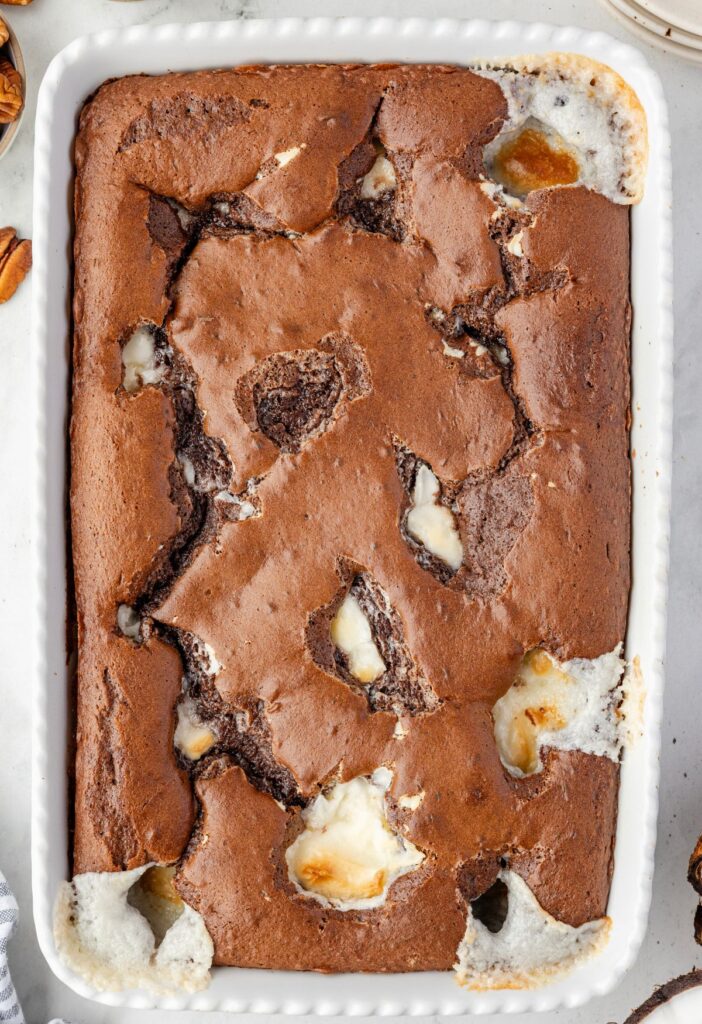
Earthquake Cake Recipe
This earthquake cake is so fun to make… and eat! I love the play on words with the name of it – Earthquake Cake – which refers to the fact that as the cake bakes, the cream cheese frosting pockets kind of settle into the cake which creates cracks across the top of the cake. Similar to an earthquake because it splits and cracks the earth.
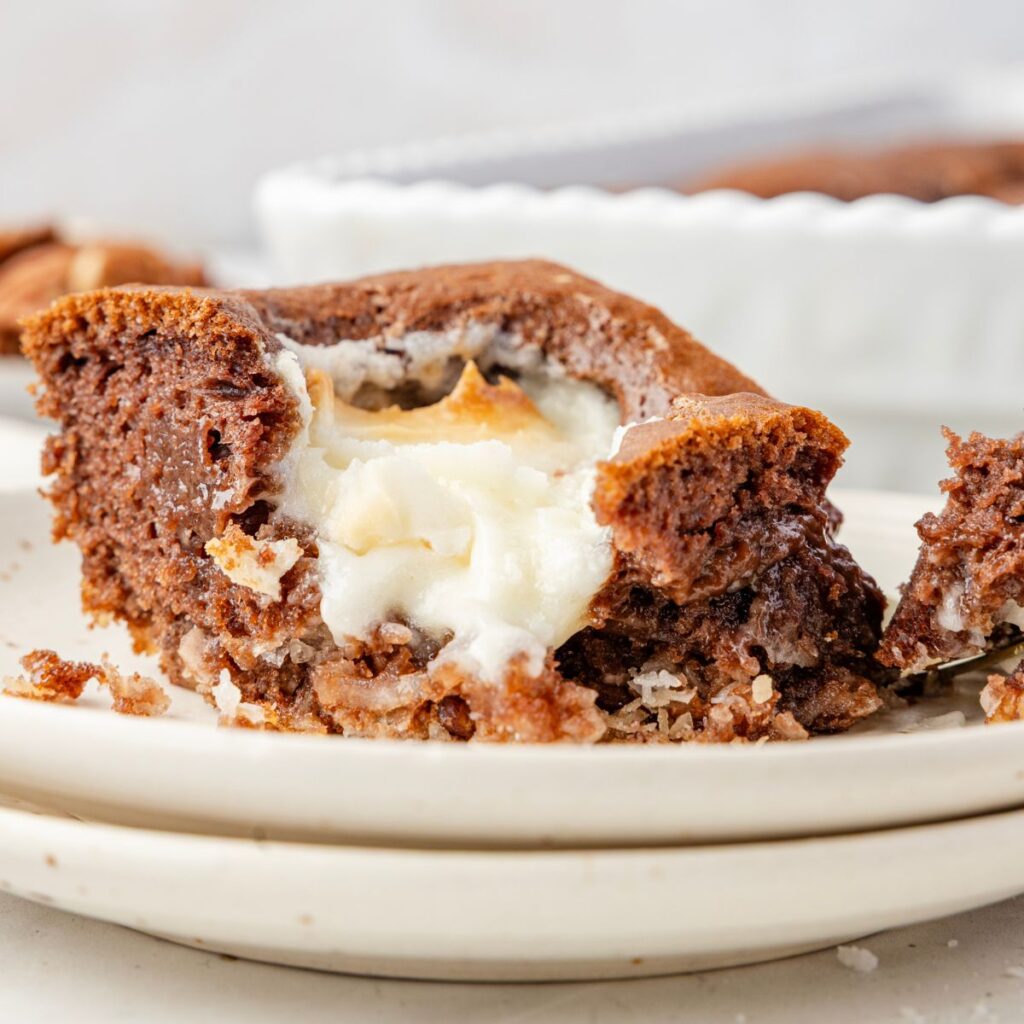
You will love the combination of cream cheese swirl pockets, crunchy pecans and coconut, and a soft delicious chocolate cake.
This cake is best served warm because it maintains it’s soft, gooey center and cream cheese frosting pockets and the whole cake kind of just melts together in your mouth.
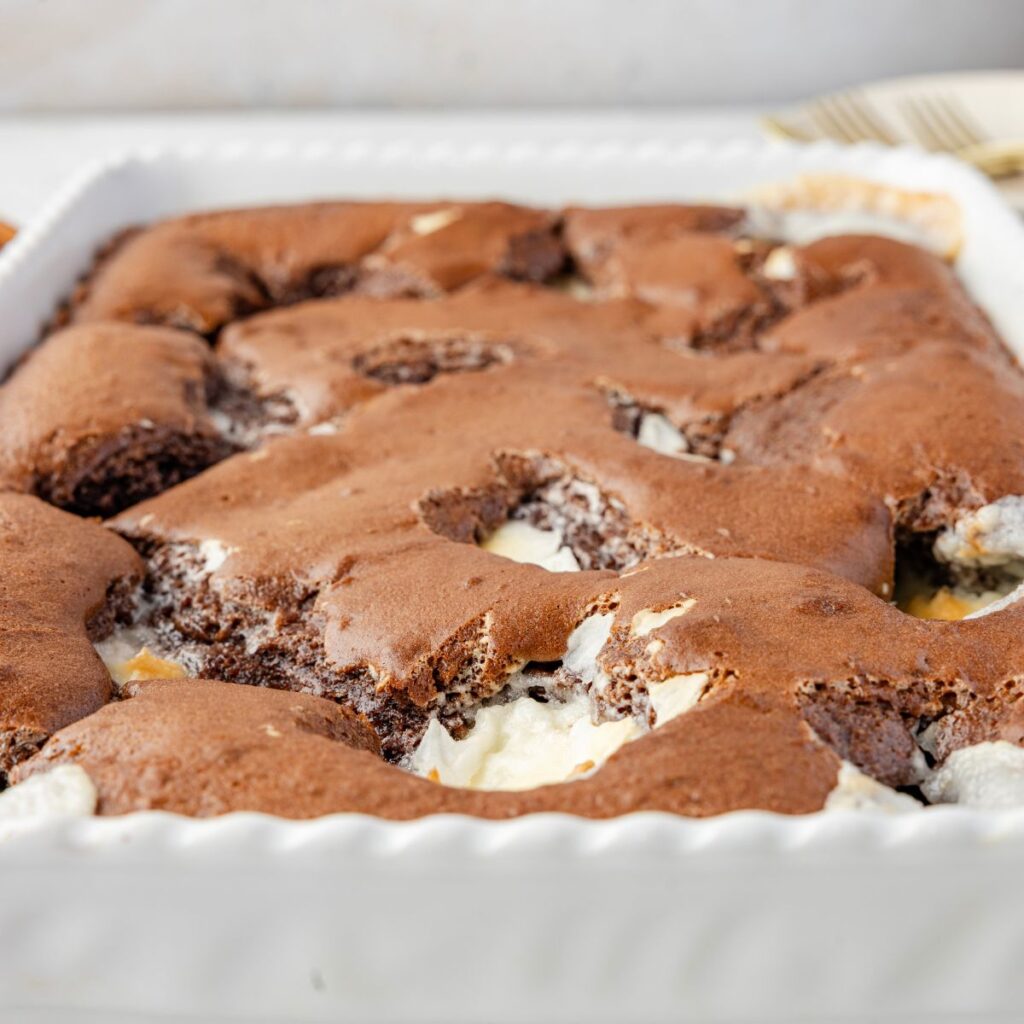
Simple Baking Ingredients Needed
- Chopped Pecans
- Shredded Coconut
- German Chocolate Cake Mix
- Water, Oil, Large Eggs : These are the ingredients called for on the back of the box.
- Cream Cheese : Make sure the cream cheese is softened to avoid lumps in the cream cheese filling.
- Salted Butter : Just like the cream cheese, make sure the butter is softened so it blends in smoothly.
- Powdered Sugar
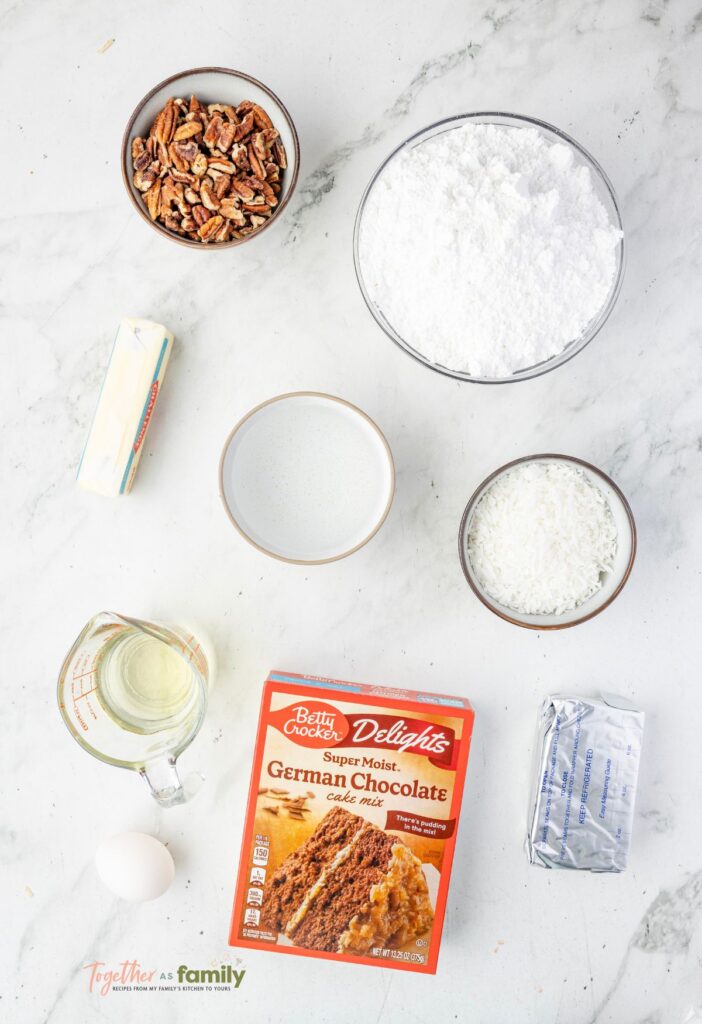
How To Make Gooey Earthquake Cake (Printable Recipe Card)
Preheat the oven to 350 degrees F. Spray a 9×13-inch cake pan with nonstick cooking spray.
Sprinkle the chopped pecans and shredded coconut evenly on the bottom of the prepared pan.
In a large mixing bowl, add the dry German chocolate cake mix, eggs, water, and oil. Use a hand mixer and beat on medium speed for 2 minutes. Pour the cake batter into the prepared pan over the pecans and coconut.
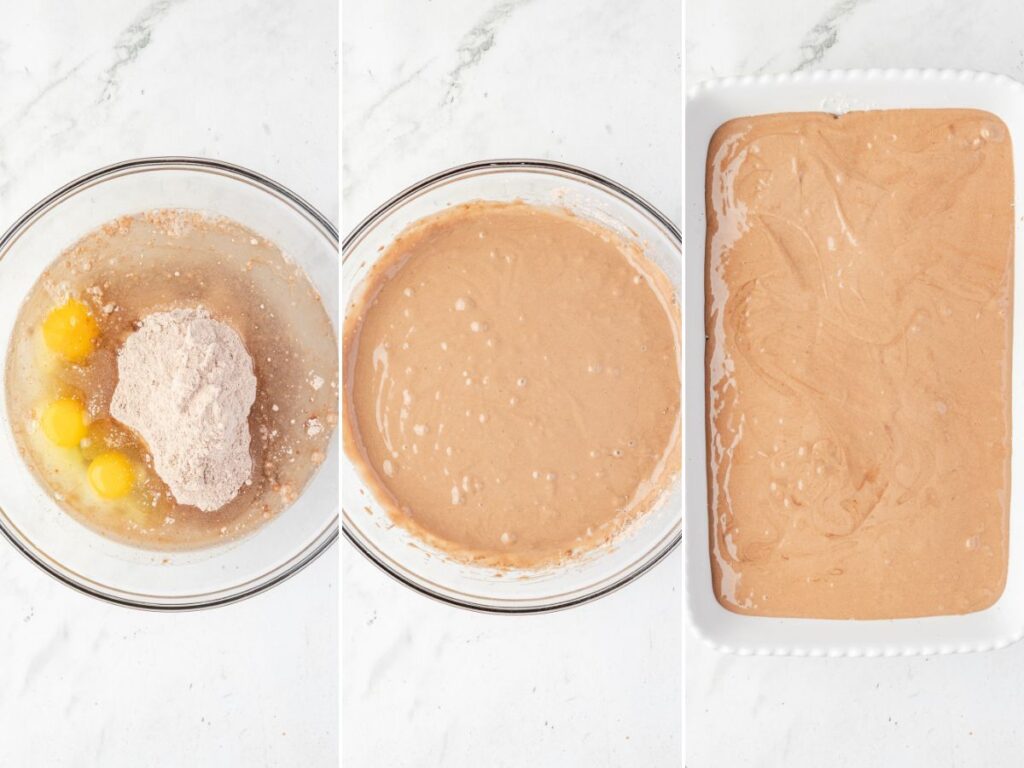
In a separate bowl, beat the softened cream cheese and butter together on medium speed until it’s smooth and creamy.
Reduce the speed to low, and slowly add the powdered sugar (1 cup at a time), beating until all the powdered sugar is well combined into the cream cheese mixture.
Spoon generous dollops of the cream cheese mixture over top of the cake batter. Do not swirl it into the cake, simply leave it on top of the chocolate cake batter so you end up with pockets of cream cheese in the final cake.
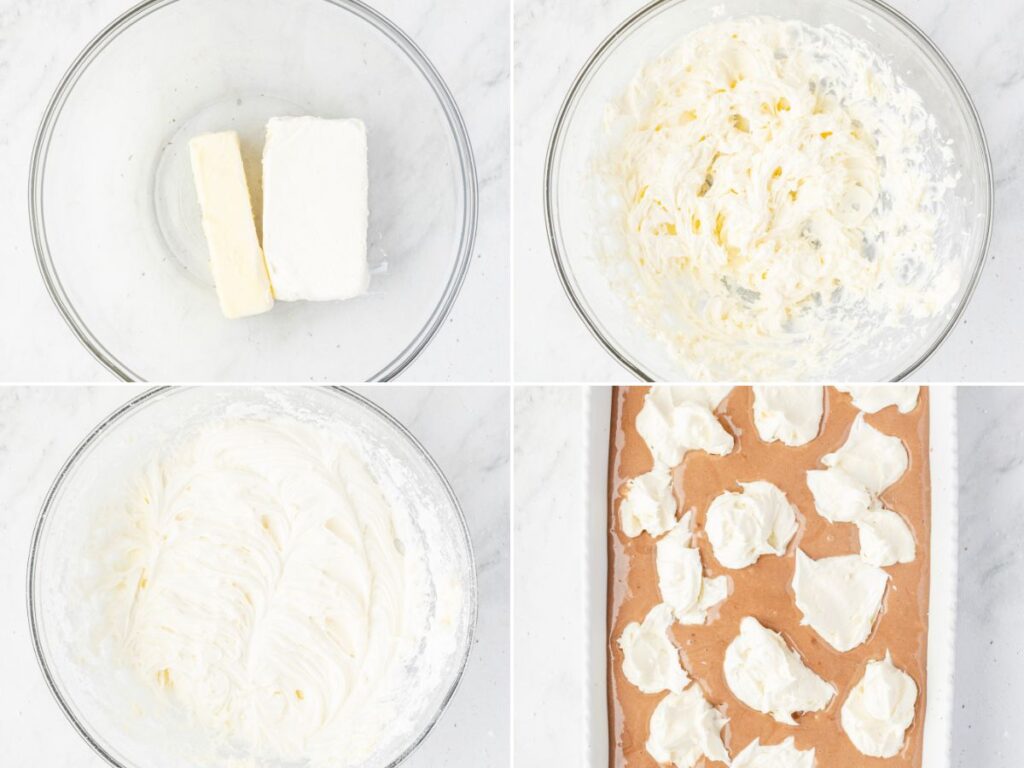
Bake for 40-45 minutes. The edges of the cake should be slightly pulled away from the baking dish and a toothpick inserted into the cake should come out clean with no wet batter on it.
Remove the cake from the oven and allow it cool at room temperature, for about 20-30 minutes, before serving it warm or closer to room temperature. Because of the cream cheese frosting pockets, the cake should not stay out at room temperature for longer than 2 hours, before needing to be refrigerated.
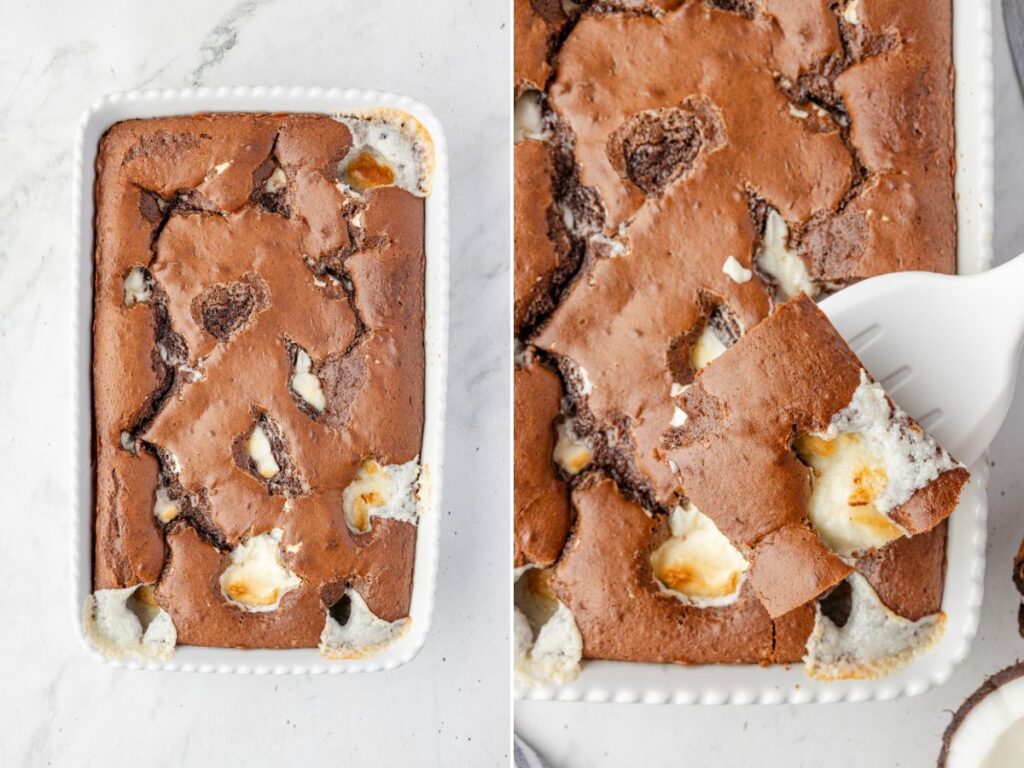
How To Store Leftover Earthquake Cake
Once cooled at room temperature for up to 2 hours, earthquake cake should be stored in the refrigerator for up to 4-5 days. Because of the cream cheese frosting pockets in the cake, the cake should not be left out at room temperature for longer than 2 hours.
Store the cake inside the cake pan covered with a lid or plastic wrap, or remove individual slices to an airtight container for storage. I recommend microwaving leftover cake for about 30-60 seconds before eating. Or if you prefer, leftovers can be eaten chilled from the fridge.
I don’t recommend freezing the cake but if you want to you can. Make sure you double wrap the cake in plastic wrap and then again in aluminum foil, and freeze for up to 3 months. Let the cake thaw overnight in the fridge.
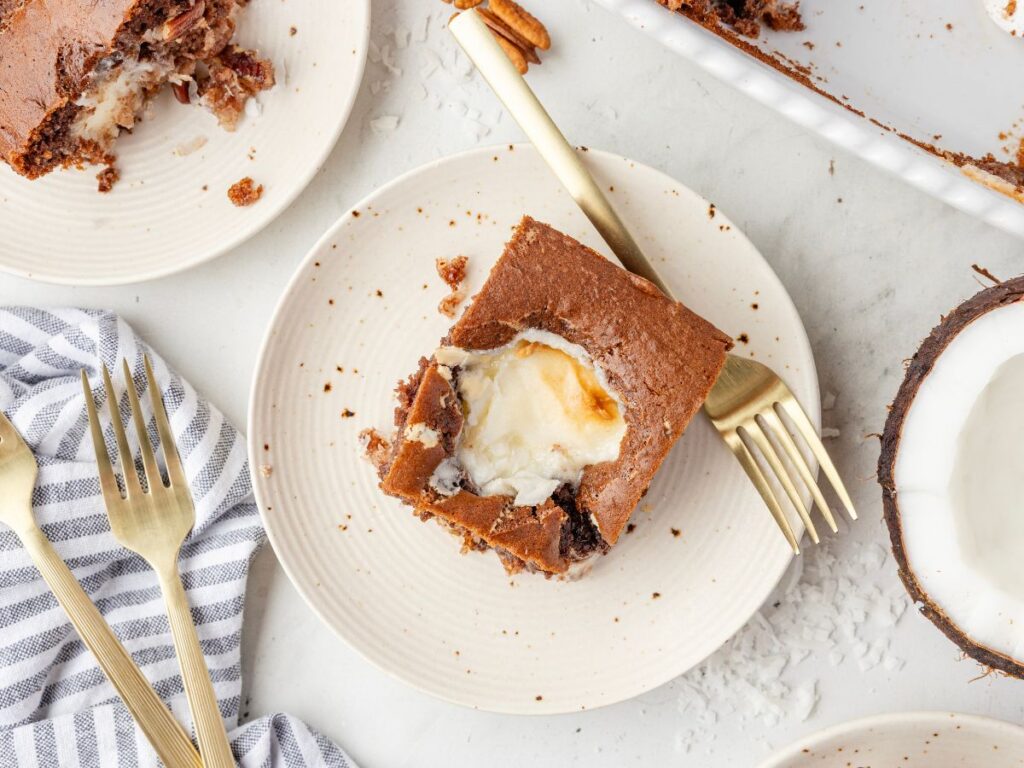
Ingredient Notes & Substitutions
- Chopped Pecans : Alternative options include chopped walnuts or almonds. Omit nuts for those with a nut allergy. I highly recommend using the nuts (as long as there are no allergies) because it really makes this cake delicious with the salty crunch they add.
- Shredded Coconut : You can use sweetened or unsweetened coconut; whichever you prefer depending on your sweetness level desired. I use sweetened coconut, but if you think it’s too sweet then try using unsweetened coconut.
- German Chocolate Cake Mix : If needed, you can substitute with a Devil’s Food cake mix.
- Oil : It’s best to use vegetable oil in baking, but canola oil would also work.
- Cream Cheese : Full-fat cream cheese is the best choice and the only one I recommend using in baking recipes. It maintains it’s thick and creamy texture and it just tastes so much better!
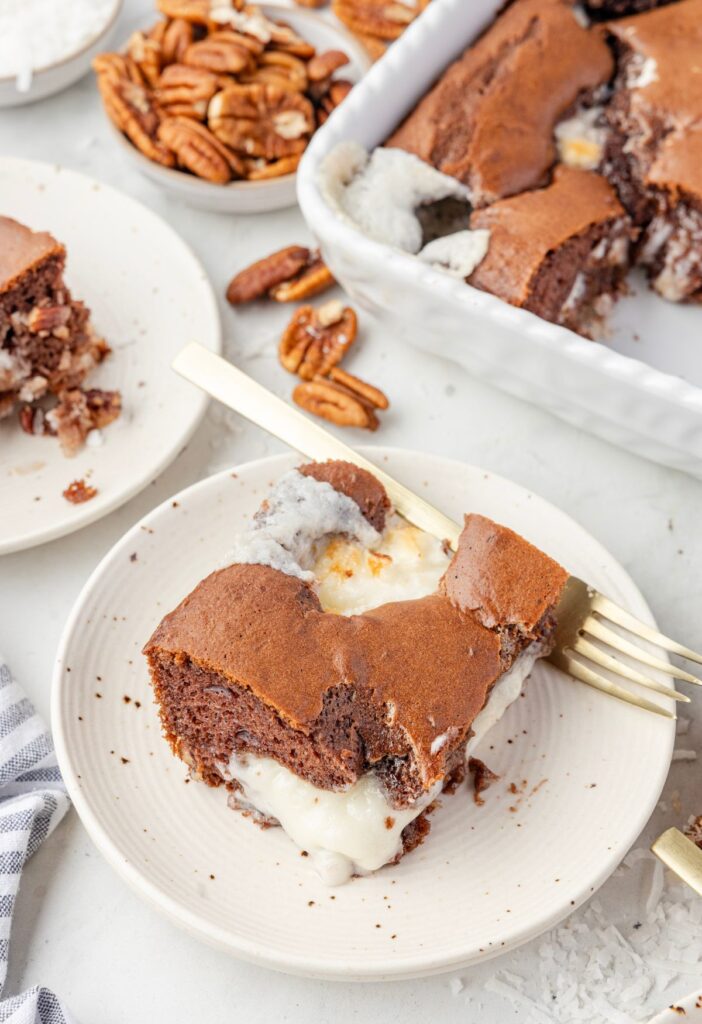
Should I Serve Earthquake Warm or at Room Temperature?
Earthquake cake is delicious served warm, at room temperature, or chilled. Serving it warm, or closer to room temperature, can highlight it’s gooey, melty center and texture – while serving it chilled, results in a fudgier and richer texture. Because of the cream cheese swirls, it should not stay out at room temperature for longer than 2 hours at a time and after baking.
My family prefers this cake warm, after it has cooled for about 20-30 minutes after baking. Serving it warm is what I recommend for the best soft, gooey, melty texture. The chocolate cake combined with the sweet, warm, melty cream cheese swirl and the crunch of the coconut and pecans, is incredible!
When making this cake for guests or for family dessert, I recommend baking the cake and serving it within 30 minutes to 1 hour of it coming out of the oven. That way, it has time to cool slightly but it’s still warm and gooey for serving. That is how I recommend serving earthquake cake ❤︎
- Serving Earthquake Cake Warm : This is the most popular option because of the gooey, melty, soft texture it creates. I don’t recommend serving it straight from the oven, but rather, let the cake cool at room temperature for about 30 minutes and then serve the cake warm.
- Serving Earthquake Cake At Room Temperature : This is a popular option, and still seriously delicious, when you’re taking the cake to family gatherings, potluck, or a picnic. The texture is still soft but you might not have that melty, gooey cream cheese layer. When I serve earthquake cake at room temperature, I think it pairs best with some whipped cream on top.
- Serving Earthquake Cake Chilled : Chilling the cake after it has baked and cooled at room temperature, creates a much firmer texture, and a richer and fudgier texture. I don’t love this cake cold. Leftovers obviously have to be stored in the fridge, so I recommend warming up a slice of the chilled earthquake cake in the microwave before eating leftovers.
Enjoy a slice of this decadent cake on its own. The richness of the chocolate cake is perfectly complemented by the coconut, pecans, and gooey pockets of cream cheese frosting – which makes each slice a unique experience. However, sometimes a scoop of vanilla bean ice cream or whipped cream is just what you need for that sweet tooth fix.
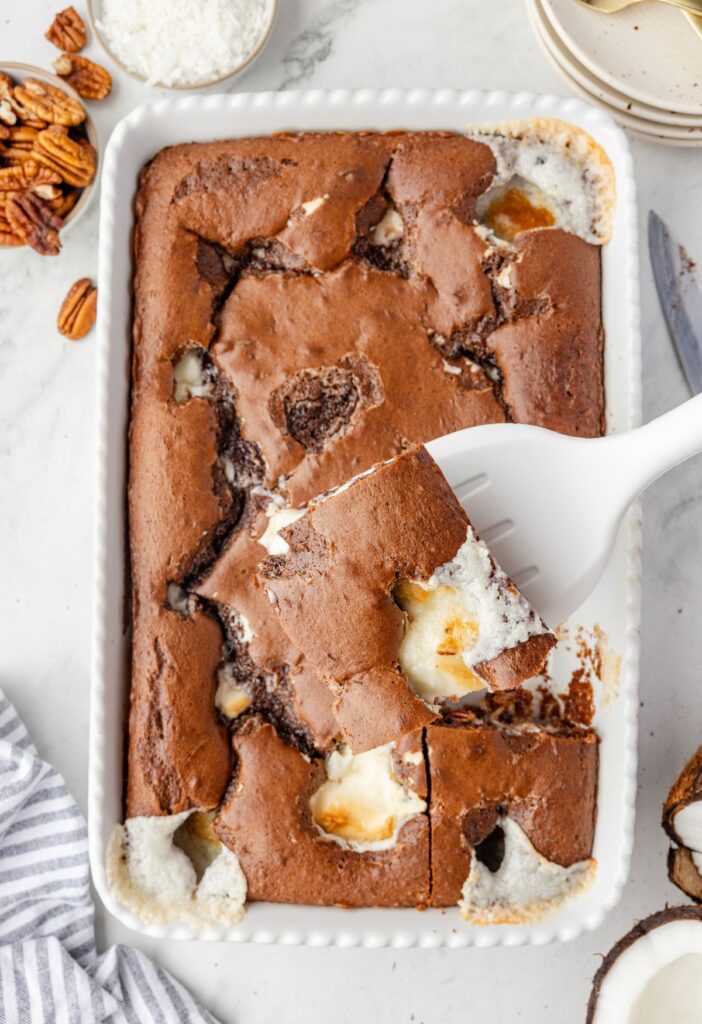
Recipe FAQs
Shouldn’t This Cake Have An Icing or Frosting?
Earthquake cake does not have an icing or frosting, but rather, the cake creates its own pockets of cream cheese frosting. Adding icing or more frosting on top, would make this cake unbearably sweet probably.
Why Is It Called Earthquake Cake?
When the cake bakes, the cream cheese mixture settles into the cake and causes it to crack open across the surface, resembling an earthquake splitting the earth. It’s a fun cake with a fun play on words name.
Can I Add Chocolate Chips?
Yes! I recommend adding some mini semi-sweet chocolate chips if you want to. They can be mixed into the cake batter or you can sprinkle them on top of the cake before baking. You cold also add dark chocolate chips to offset the sweetness, white chocolate chips, or even peanut butter chips.
Should I Use Toasted Coconut?
I don’t recommend using toasted coconut in this recipe. The coconut will bake in the bottom of the pan, and using already toasted and baked coconut, could result in a burnt coconut flavor.
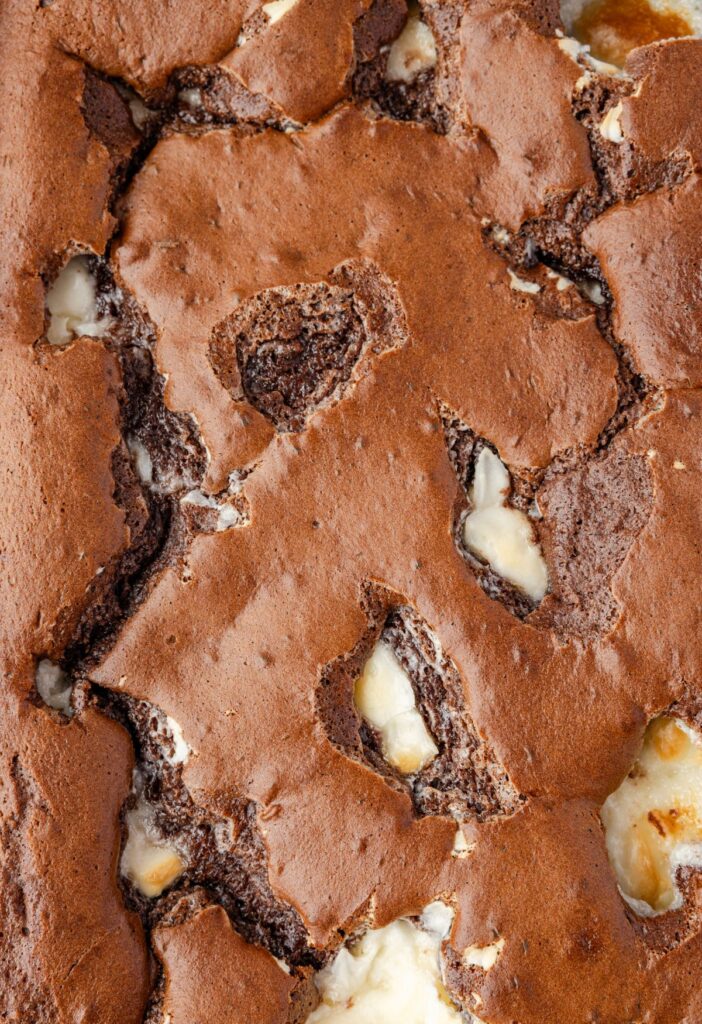
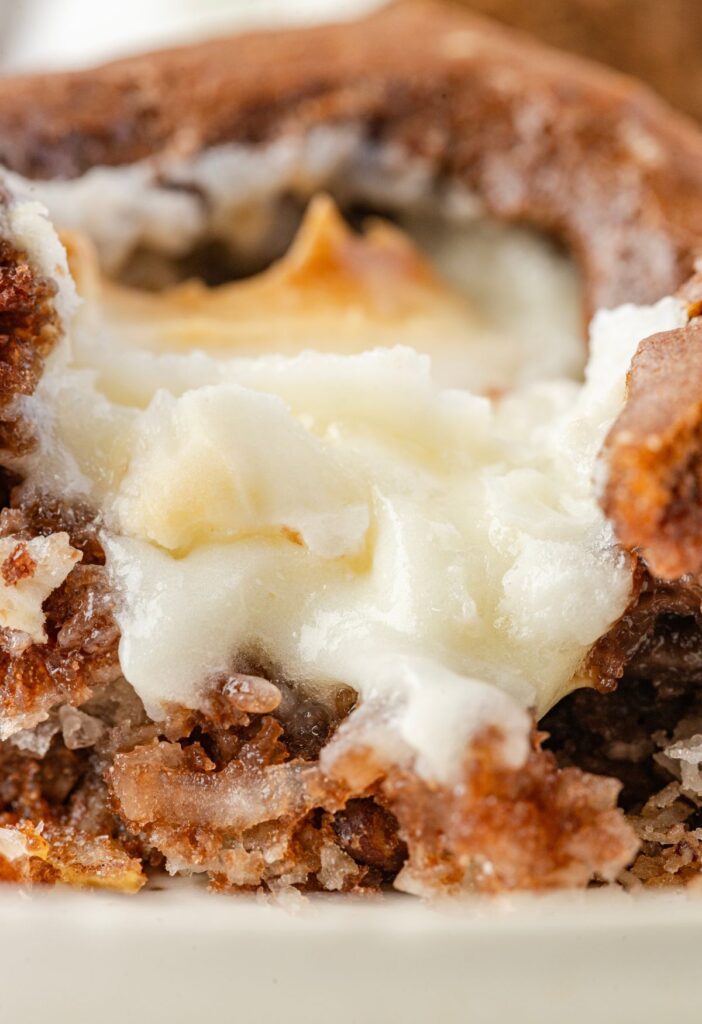
More Cake Recipes That Use A Cake Mix
- Honey Bun Cake
- Pineapple Pistachio Cake
- Easy Strawberry Cake
- Mississippi Mud Cake
- Easy Dr Pepper Cake
- Boston Cream Poke Cake
- Orange Pineapple Cake
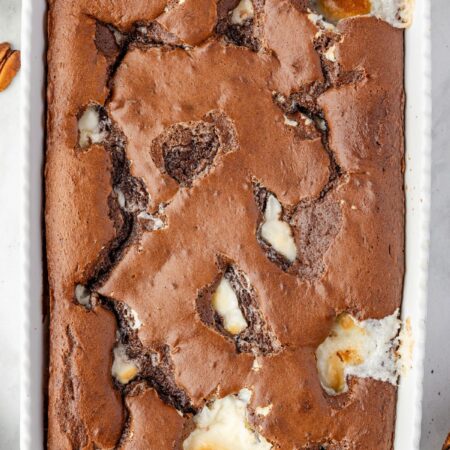

Earthquake Cake
Ingredients
- 1 cup chopped pecans
- 1 cup shredded coconut (I use sweetened)
- 1 box (13.25 oz) German Chocolate cake mix
- 3 large eggs
- 1 cup water
- 1/2 cup vegetable oil
- 1 bar (8 oz) cream cheese softened
- 1/2 cup (1 stick) salted butter softened
- 4 cups powdered sugar
Instructions
- Preheat the oven to 350℉. Spray a 9×13-inch cake pan with nonstick cooking spray.
- Sprinkle the chopped pecans and shredded coconut evenly on the bottom of the prepared pan.1 cup chopped pecans, 1 cup shredded coconut
- In a large mixing bowl, add the dry German chocolate cake mix, eggs, water, and oil. Use a hand mixer and beat on medium speed for 2 minutes. Pour the cake batter into the prepared pan over the pecans and coconut.1 box (13.25 oz) German Chocolate cake mix, 3 large eggs, 1 cup water, 1/2 cup vegetable oil
- In a separate bowl, beat the softened cream cheese and butter together on medium speed until it's smooth and creamy.1 bar (8 oz) cream cheese, 1/2 cup (1 stick) salted butter
- Reduce the speed to low, and slowly add the powdered sugar (1 cup at a time), beating until all the powdered sugar is well combined into the cream cheese mixture.4 cups powdered sugar
- Spoon generous dollops of the cream cheese mixture over top of the cake batter.*Simply leave it on top of the chocolate cake batter so you end up with pockets of cream cheese in the final cake, if preferred, you can swirl the cream cheese pockets into the cake batter for a swirl pattern; but keep the swirls on top of the cake batter and avoid the pecan/coconut layer at the bottom.
- Bake for 40-45 minutes. The edges of the cake should be slightly pulled away from the baking dish and a toothpick inserted into the cake should come out clean with no wet batter on it.
- Remove the cake from the oven and allow it cool at room temperature, for about 20 minutes, before serving it slightly warm so it's still soft with gooey pockets of cream cheese frosting.*Because of the cream cheese frosting pockets, the cake should not stay out at room temperature for longer than 2 hours, before needing to be refrigerated.
Notes
Nutrition
Did You Make This Recipe?
I’d love to see it! You can share it with me on @togetherasfamilyblog and follow on Pinterest @together-as-family-blog-recipes or Facebook @togetherasfamilyblog for more!






Did you love this recipe?
Make sure to comment below so we can chat about it! Or follow on your favorite social network for even more family recipes.